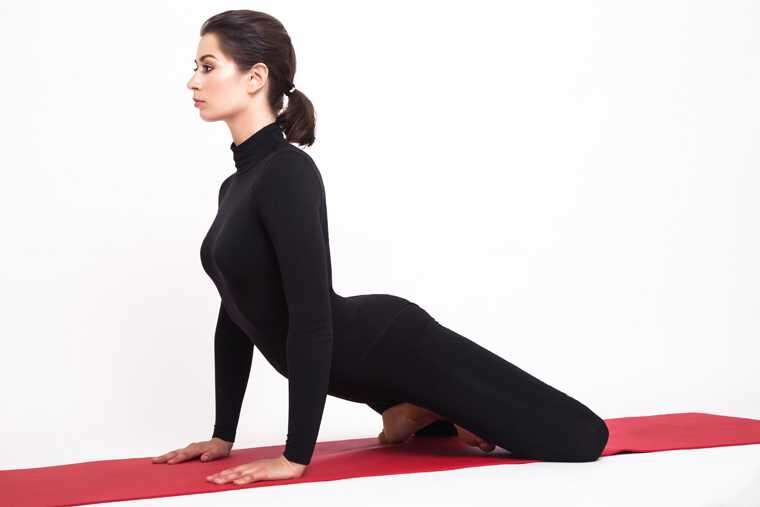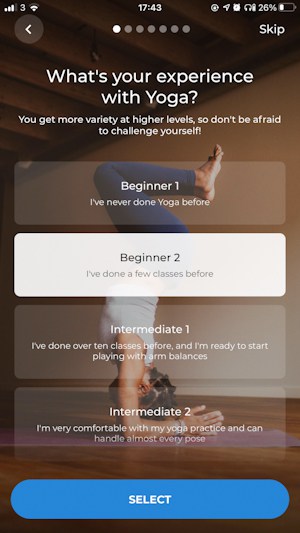
Sanskrit's word for "unite or join" is where yoga comes from. This union refers to a union of mind and body, and to the individual consciousness with universal consciousness. In India, yogic practices were practiced in the early decades of the 20th-century. Lord Shiva, the first known yogi, spread it through his writings. These books were translated into many languages and distributed to different regions around the globe.
As yoga became more popular, it wasn't uncommon for the practice to be seen as more westernized, particularly in Europe. In the early 1900s, the emergence of VHS tapes and DVDs led to the widespread distribution of yoga videos. The booming fitness industry and the Internet made yoga popular in the United States, and the spread of the practice was fast and widespread. The invention of the microphone in the 1990s and transatlantic flights made it possible for ideas to be spread widely and reached large audiences.
Yoga has a long history dating back thousands of years. Although it was initially practiced to attain spiritual goals, Westerners became aware of it only in the second half of the 20th century. Swami Vivekananda, an Indian monk, toured Europe and the U.S. to bring the practice to the world. He eventually taught yoga to the West, where it has been popularized in modern times. This is an excellent place to learn about the history and practice of yoga.

Yoga can be traced back to northern India, where it was first practiced in ancient times. The Vedas are the oldest of all the four Vedas and contain references to yoga. The Rig Veda is home to over 1000 hymns as well as 200 mantras. To learn about yoga, priests from the Vedic age used Rig Veda. Many Rishis refined the practice in later centuries and brought the modern version to life. The Upanishads are another great source of information about the history of yoga.
Yoga was first mentioned in ancient India. The practice developed to include physical postures, or asanas. Hatha yoga gained popularity in the U.S. around the turn of the 20th century, when many teachers began adding asanas onto their classes. In the 1970s, the practice gained acceptance worldwide. The United States birth of yoga was the catalyst for its popularity and expansion.
Yoga has a complicated history. Its roots date back to 2000 BC, when the practice was primarily focused on the mind. It was then influenced by western gymnastics and the first Hatha Yoga practices were created. The practice developed into Hatha yoga in the 1920s. Today, asanas are commonly used as a tool to achieve this goal.
Yoga has a long history that goes back to ancient India. The practice and philosophy of yoga were very different thousands of years ago from Vinyasa today. You will learn more about yoga's history and be better able to understand it. One example is that ancient yoga wasn't practiced in the exact same way as modern-day Yoga. It is possible to trace the origins of Yoga back thousands of years. This will help you gain a greater appreciation for the practice.

There is a rich history of yogic practices in yoga's history. Although the ancient yoga practitioners were mainly Hindu, their influences were still heavily Hindu. Yoga was mostly banned in the West by the British. After this, the practice of yoga began to spread in Europe and the USA. In the latter 1800s, yoga was introduced to the United States from India by gurus. Asana, a form of meditation, is one example.
Asana is the base of all yoga practices. Asana is a very ancient practice. The practice of yoga was spiritual and religious at its best in the 5th Century. Jainism was also included in the ancients. The Classical Period was the time when yoga beliefs and practices were first presented in a systematic manner. Yoga's influence and popularity grew for many centuries. But as with any new practice, the roots of it are still rooted in the same principles and ideals.
FAQ
What is the Best Workout for Men Over 40 Years?
For older men, the best workout usually gives them more energy and improves their stamina.
It is important for you to know that over 40s experience a reduction in testosterone which can lead to lower sex drive.
This doesn't mean that you shouldn't still engage in physical activity. Research has shown that exercise regularly can increase testosterone in men.
Aerobics can be a good way to improve your sexual performance.
Do I have to exercise while drinking alcohol?
Yes. Alcohol increases energy expenditure, speeds up recovery times, and reduces soreness.
It also increases insulin sensitivity. This makes it easier and faster to absorb glucose.
Alcohol can also cause dehydration which can lead to a slower metabolism. Alcohol can also lower testosterone production, which could lead to a decrease in muscle-building potential.
Women shouldn't consume alcohol before exercising. Women who drink heavily should wait at the least 24 hours before exercising.
It is important that women who are nursing avoid alcohol.
Men should have no more than one drink per day.
What does butter do?
Butter is one of many good sources of saturated fats. This type is beneficial for healthy skin and hair as well as stronger bones.
Vitamin K, found in butter is an antioxidant that prevents bleeding from cuts. Vitamin K works with vitamin A to prevent bleeding.
Butter is also rich mineral, including calcium and phosphorous. These elements promote stronger bones and teeth.
Butter is not without its flaws. Butter has high cholesterol. Studies show that too much cholesterol can increase your risk of developing heart disease.
Butter is also high-fat, which can contribute to obesity and increase cholesterol.
However, if you must have butter, try spreading it on bread rather than dipping it into soup or salad. Bread absorbs less oil than pasta and potatoes.
Statistics
- The PRS enabled risk stratification for overall prostate cancer and lethal disease with a four-fold difference between men in the highest and lowest quartiles (HR, 4.32; 95% confidence interval [CI], 3.16-5.89). (pubmed.ncbi.nlm.nih.gov)
- According to the American Heart Association, blood pressure should be checked at least once every two years, beginning at age 20. (my.clevelandclinic.org)
- 10 pounds in a month is likely during a lean bulking phase, especially for beginners. (muscleandstrength.com)
- An estimated calorie range for moderately active adult males falls between 2,200 to 2,800 calories per day, depending on age. (eatright.org)
- Candidates and applicants must pass all four tests at 70% (minimum level) to graduate from Basic Deputy U.S. Marshal (BDUSM) Training. (usmarshals.gov)
External Links
How To
How can a man lose weight in just 30 days.
Breaking down your fitness goals into manageable steps is the best way to reach your goals.
You need to make sure you are working towards the goal each day. This could be anything from running 3km to doing 10 pushups in 5 minutes.
You will notice positive results if this is done consistently over time.
Be consistent is key. It is important to persevere until you succeed.
What is the difference between Aerobic Fitness (or Anaerobic Fitness)?
Anaerobic fitness means that our bodies can perform intense physical work with no oxygen. Anaerobic pathways can be used to supply enough energy during high-intensity exercise. Anaerobic pathways include glycolysis and creatine phosphate.
Cardio fitness is, in contrast to aerobic fitness, the practice of sustaining low-intensity exercise. While performing aerobic exercises, oxygen is used as the primary source of fuel for the cells. The aerobic pathway is more efficient than the anaerobic.
For example, if you want to run a marathon, you must first build up your aerobic capacity. If you don't focus on increasing your aerobic capacity, you will not be able finish the race.
Aerobic fitness also refers to cardiovascular fitness. The two most commonly used methods of measuring cardiovascular fitness, are VO2 Max testing and step tests.
Tests for VO2 Max
The maximum amount of oxygen (O2) the body can use during exercise is called VO2 max. This test measures the body's ability to use O2 while exercising.
This test measures cardiovascular fitness in a way that is most accurate. It requires expensive equipment and highly-trained professionals to administer.
Step Tests
Step tests are simple yet effective methods of measuring cardiovascular fitness. These are based on your weight and age, they require you to run or walk on a track.
These tests cost little, are quick and simple to do, and can be carried out almost anywhere. You can for instance walk on a treadmill 2 minutes, then stop for 1 minute. Throughout the entire session, your heartbeat should stay within a set range.
This protocol is called the "Bruce Protocol". Bruce was himself a runner and developed the protocol after realizing his heart rate wouldn't increase when he ran for longer distances.